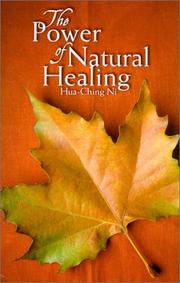

This teaching has profound implications for both mundane affairs and psychotherapy. Similarly, when people know goodness as goodness, without knowing that it co-exists with evil, goodness tends to become evil” (Lao-tzu, trans., 2000, chap. In Tao Te Ching, the main text that embodies Lao-tzu’s teachings, it is explained that “when the world knows beauty as beauty, without knowing that it depends upon its opposite, i.e., ugliness, then beauty turns out to be ugly. But understanding how the two poles support one another leads to a peaceful and integrated life” (p. This in turn leads to suffering and self-destruction. As psychologist Swami Ajaya (1997) says, “In Taoism it is believed that when one is unaware that the two sides of a polarity support one another to form a whole, he identifies with only one side of the polarity.

With this insight one will not be overwhelmed by the vicissitudes of life, the ups and downs of human affairs. For example, goodness cannot exist without evil and as Lao-tzu observes, “Fortune owes its existence to misfortune, and misfortune is hidden in fortune” (Lao-tzu, trans., 2000, chap. Among other things, it brings forth the insight that all things in the universe exist in polarity (or duality), with the two opposites in a polarity complementing each other and making the existence of each other possible. Thus, the Way of nature as expounded by Taoism goes deeper and broader than a matter of life style. By letting go of our ego in a mental state of “do nothing,” Lao-tzu teaches, we can achieve perfect “tranquility” and access our Origin, thereby attaining serenity, wisdom and enlightenment (Lao-tzu, trans., 2000, chap. Rather than identifying Tao with God, Lao-tzu refers to It as “the Way of nature.” But here the concept of “nature” not only means the great Cosmos, but also includes our true nature – the Origin of our life. And because It does nothing, there is nothing It cannot do. Paradoxically, because It takes no action, It is the source of all actions. As far as function is concerned, Tao creates and nourishes everything in the Cosmos, and yet It appears to “do nothing” ( wu wei in Chinese), which means that Tao, being spontaneous, has no intent or impulse to strive, to act and to react as we humans do It simply allows things to take their own courses. Among them are the qualities of being selfless, simple, authentic and spontaneous. According to Lao-tzu, the founding philosopher-sage of Taoism, Tao is beyond all thinking and description, without image or form, but he nevertheless identifies a number of the spiritual properties of Tao for the purpose of teaching. The Chinese word Tao literally means the “Way”- the ultimate creative principle that gives birth to the entire universe. In identifying Taoism with “the Way of nature,” a word of clarification is needed. Therefore, Taoism has much to offer to psychologists in the West regarding the oriental wisdom of coping with stress.
#Harmony the art of life by hua ching ni how to
The strength of Taoism is that it not only teaches a philosophy of life on how to live a contented, serene life regardless of circumstances, but also prescribes physical and breathing exercises that reduce stress and enhance physical and mental well-being. Taoism, along with Buddhism and Confucianism, has remained an influential philosophy that enables the Chinese to bear the unbearable and attain a sense of well-being in the midst of suffering. Throughout the Chinese history, “return to a genuine and simple way of life” has been held as an idealistic vision for those who are fed up with the vanity of worldly affairs and as a way of coping with the hardships in life. The Way of nature is defined as one of simplicity, authenticity and spontaneity. The philosophy of Taoism is well known to have espoused a natural way of life.

Handbook of Multicultural Perspectives on Stress and Coping


 0 kommentar(er)
0 kommentar(er)
